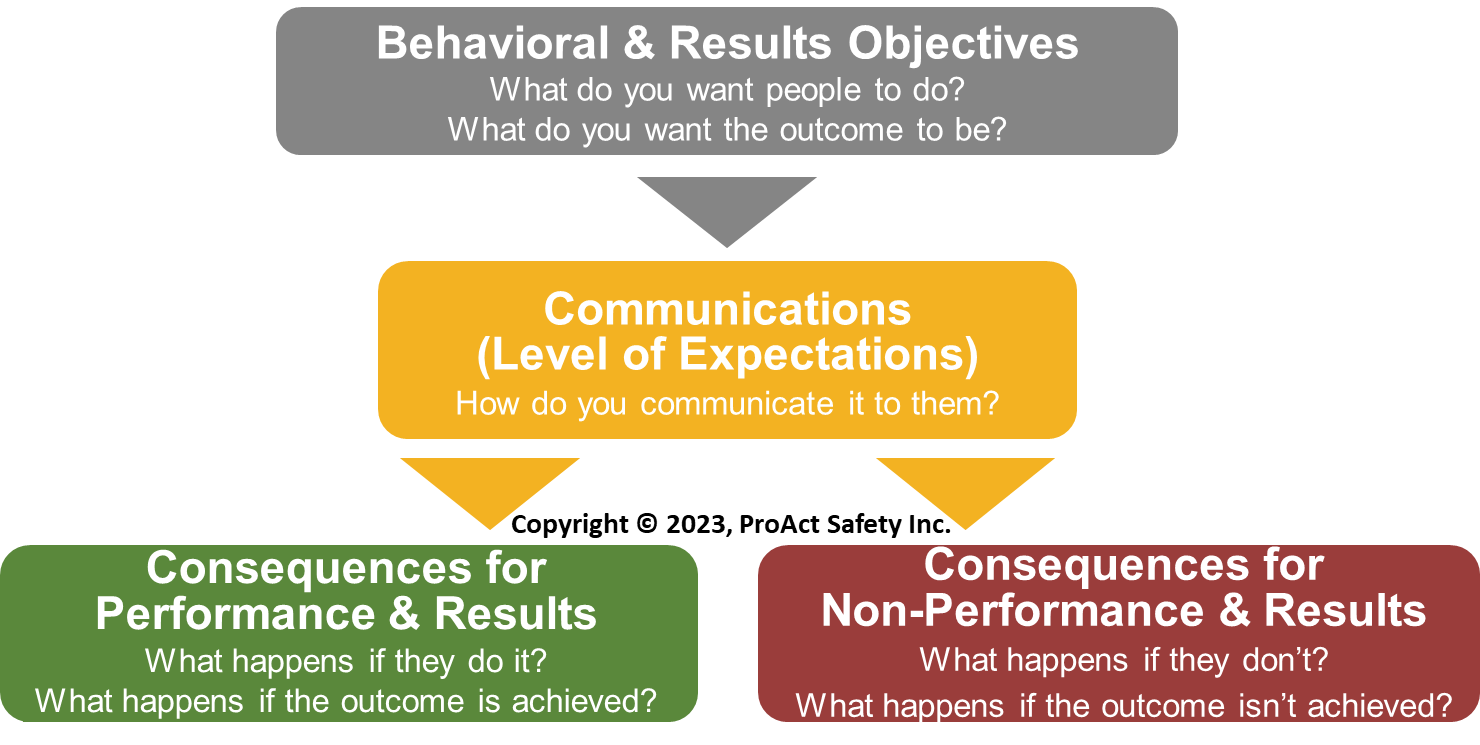BIC - November 2023
By: Shawn M. Galloway
Printable Version
When you hear or see the word "accountability," what comes to mind? To many, they imagine an authority figure banging their fist on a table, yelling, "We didn't get the results we wanted. Who are we going to hold accountable?!" If this is the experience of being held accountable, no wonder the term has a negative connotation and becomes elusive within an organization.
Accountability can be both reactive and proactive. The consequences of being accountable or not can also be positive — desirable behaviors or results — and negative — undesirable results or behaviors — depending on how it is received. Accountability can also focus on results and be proactive, focusing on behaviors or performance.
Results Accountability: We accomplished the objectives, and the goal was met. The leader shakes the employee's hand and says, "Because you did this, we are celebrating this win. Great job!" Positive results accountability. Conversely, "Because this didn't happen, we didn't meet our goal. What happened?" A better approach than banging a fist on a table. Negative results accountability.
Proactive Accountability: "We are halfway through the month, and I've noticed you are doing precisely what we agreed to. I'm confident we will hit the target at the end of the month." Positive, proactive accountability. Conversely, "We are halfway through the month, and I noticed your commitments to help us reach our target are not being met. What can I do to help you be successful here?" Negative proactive accountability. The focus here is on behaviors.
To better understand accountability, let's first face some important truths.
Truth number one: Real accountability is performance-related, not just results based. Truth number two: Humans do a much better job aligning others with our results expectations than behavioral expectations. Truth number three: All disappointment is based on a set level of expectations. Truth number four: Humans are hardwired to manage by exception, looking for what is out of place, not the norm, or incongruent with expectations. Truth number five: Positive reinforcement is largely absent in conversations about behavior and results in many workplaces.

If you want a culture of accountability, there must be effective and confident answers to four important questions:
- What do you want the person to do, and what are the desired outcomes? There need to be clear expectations on both behaviors and results expectations.
- How do you communicate expectations to the individual? How do you get it out of your head and into theirs and verify the message was received and understood?
- What happens if they meet behavioral expectations, and what happens if the objectives are met, or desired results received?
- What happens if they do not meet behavioral expectations, the objectives are not met, or the desired results are not received?
Accountability in safety doesn't have to be a dirty word or a burden to implement. If done correctly, accountability can be a tool to achieve excellence in the workplace and in overall safety results.

Shawn Galloway, CEO of ProAct Safety, is an expert in safety excellence. With almost thirty years of experience, he is a highly sought-after advisor, keynote speaker, and expert witness. Shawn has become a trusted partner to leading organizations across various industries worldwide. He ranks in the top 1% of the most prolific writers in his field, having authored over 500 articles and several bestselling books. He also launched the world's first safety podcast, Safety Culture Excellence©. As a recognized authority in safety, Shawn has received awards such as being named among the Top 50 People Who Most Influence EHS and a Top 10 Speaker, among others.
He is a regular guest on Bloomberg, Fox News, The Daily Mail, Dubai One, U.S. News & World Report, Sirius Business Radio, Wharton Business Daily, and leading safety magazines and podcasts. Shawn also serves as a member of the Harvard Business Review Advisory Council, Forbes Business Council, and Fast Company Executive Board, enabling his influence to shape safety thinking and strategy at the executive level.
